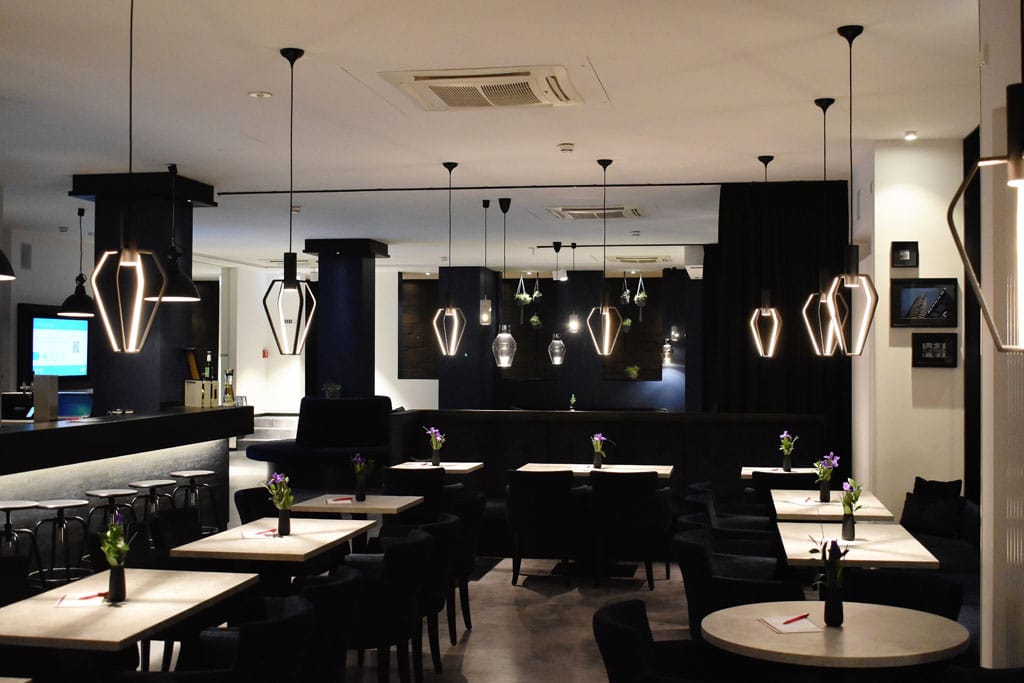Keep a blog for your restaurant.
A month ago, we told you how to create a website for your restaurant, today we're talking about something both similar and different.
In the competitive world of restaurants, a blog can make all the difference! How to create and run a blog for your restaurant: instructions for online restaurateurs. How do you go about it? What to write about? What tools are available? This article takes a look at all the issues to help you make sense of them. And then you think, why a blog?
What are the advantages of a blog for your business?
A company blog has a number of advantages: It considerably improves the SEO (search engine optimization) of your site and your restaurant, thanks to regular content optimized for the keywords you're interested in. It naturally reduces your advertising costs. It builds reader loyalty and helps you turn them into regular customers. It lets you communicate effectively about your identity, your team, your producers, your permanent or temporary offers, your Chef... It helps you expand your customer base by collecting the emails of some of your visitors (to send newsletters, for example). It's the ideal relay for your social accounts (Facebook or Instagram, for example).
How do you create your blog?
You can use WordPress, a free, feature-rich blogging platform. If you already have a website for your restaurant, it's easy to "hook" your blog onto it and add your latest articles to your navigation menu. Other solutions exist, such as Tumblr or Overblog, but you'll have much less impact in terms of SEO and sales, since your blog will be hosted on a third-party platform. What kinds of topics can you cover on your restaurant blog? Generally speaking, a blog should never be 100% promotional. For example, for every 10 articles published, only 1 or 2 should be devoted to advertising your restaurant (new menu, special offer, event, etc.).
Interesting themes:
Behind the scenes of your restaurant: behind the scenes in the kitchen, your Chef's purchases at the market or meetings with producers, the life of the establishment, highlighting the team... You've just been to Popina's cash register for example, talk about it... Recipes: Internet users love simple recipes or culinary techniques that they can recreate at home. Now's the time to showcase your best dishes and share your know-how! Portraits & presentations of producers or products: depending on the season, your arrivals and the spirit of your menu, think of presenting your producers, winemakers, or simply a specific ingredient when you add it to the menu. Announce special events or evenings: A festive evening, a Christmas meal or a New Year's brunch? Your blog is the ideal medium for announcing it, in addition to social networks. Relaying press or web publications that highlight your brand. Competitions or surveys: you could, for example, organize a photography or drawing competition, or why not ask for your customers' opinions on the next menus to be offered on the menu... The key is to put yourself in your customers' shoes, according to what you know about them and your restaurant's identity. What do they like to eat? Are they interested in fresh produce, good wine, entertainment, cuisine... or even their pizza/football game night?
"Blank sheet syndrome
You're thinking, "I don't know how to write," or "What am I going to write about? Don't worry, a blog isn't just made up of written content.
You can vary the formats: video, podcasts, photographs, insertions of publications from social networks... Video works particularly well today. Why not film scenes in the kitchen, upload them to YouTube and then insert them with a few comments in a blog post? A good smartphone or camera is all you need to get started. Go for it!
For the written part, ask someone to proof-read or delegate the writing to a professional or an employee who would enjoy it. It's also important to collect as many emails as possible from your visitors, so that you can send them newsletters and new blog posts. We recommend using MailChimp, which is very intuitive and free as long as your subscriber list doesn't exceed 2,000 people. If you exceed this limit, you'll pay a flat-rate fee afterwards. Finally, if you want to save time when promoting your new articles, you can open a free or paid account on Buffer, an easy solution for automating your social network shares!
Facilitating your new passion:
Create an editorial calendar to save time. A simple Excel spreadsheet with article topics and publication dates will help you avoid blank-page syndrome. Remember to include important keywords for each article. Create links between your different articles, but also to the sites or people you mention. Encourage comments by asking readers questions, and reply to anyone who takes the time to leave you a message. Spend as much time promoting your article as you did writing it. If you've spent 1 hour on it, count the same amount of time sharing it on social networks, sending out a newsletter, and so on. The most important thing is to be regular: rather than posting 5 articles in a few days and then disappearing for 3 weeks, organize yourself to create a fixed appointment with your readers: once a week is ideal, but depending on your constraints, you may just as well decide to publish once a month.




